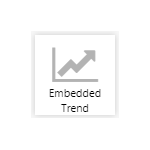
This article describes how to apply security to individual workspaces in Explorer.
Read more

This article provides an overview of how security works in IFS OI Explorer v4.6 and later.
Read more

Objects in P2 Explorer are the lowest level of granularity that can be secured. This article describes how object security works in P2 Explorer 4.6 and later.
Read more

Objects in IFS OI Explorer are the lowest level of granularity that can be secured. This article describes how object security works in IFS OI Explorer 4.9.1 and later.
Read more

Before you can get data into P2 Server, you must define a datasource. This article explains how to create a datasource, and the terms that relate to dataset datasources (e.g. data stored in SQL Server or Oracle databases).
Read more

Before you can get data into IFS OI Server, you must define a datasource. This article explains how to create a datasource, and the terms that relate to dataset datasources (e.g. data stored in SQL Server or Oracle databases).
Read more

Users can be manually added to P2 Explorer, with various privileges for accessing modules and objects. This page explains how to add a user to P2 Explorer, using P2 Server Management.
Read more

This article provides an overview of how security works in P2 Explorer v4.6 and later.
Read more

The Embedded Trend component is used to embed a smaller version of a trend within an Explorer page, and is used for quick and simple diagnostics. This article describes how to configure the Embedded Trend.
Read more

An Edge Host allows IFS OI Server Adaptors to be installed remotely from the main IFS OI Server machine, and is primarily used to allow IFS OI Explorer to get data securely from an on-premise datasource.
Read more